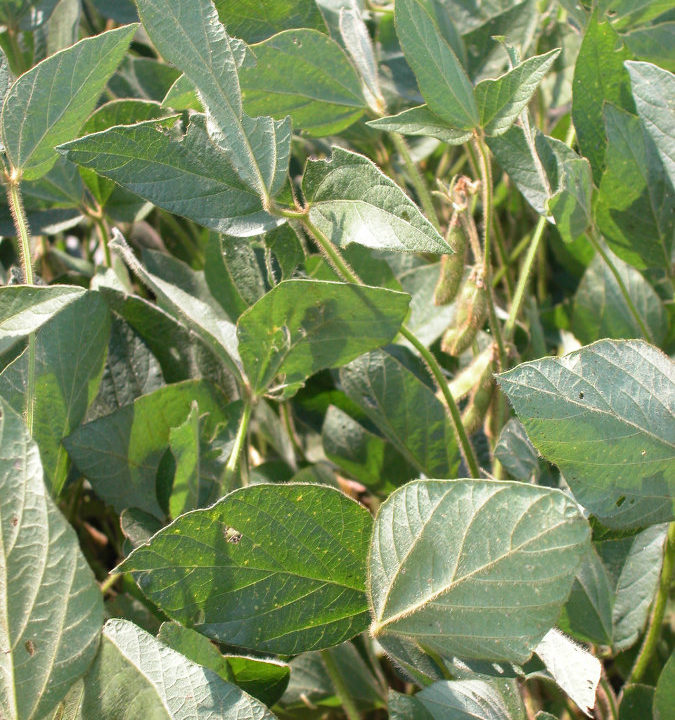May 2, 2012


Did you know that soy is being used for some surprising new purposes, including home insulation and car seats? Although Sierra Club Green Home was excited to learn that some companies were exploring greener materials, a closer look at these products shows that their sustainability merits are questionable. Before embracing or rejecting the soybean, read SCGH’s investigation into soy foam products. (Photo by M. Nash, National Soybean Research Laboratory)
[nggallery id=179 template=carousel images=4][imagebrowser id=179]
By Mike Brandolino
May 2, 2012
Did you know that soy is being used for some surprising new purposes, including home insulation and car seats?
Although Sierra Club Green Home was excited to learn that some companies were exploring greener materials, a closer look at these products shows that their sustainability merits are questionable.
Before embracing or rejecting the soybean wholesale, read SCGH’s investigation into soy foam products. Let’s start with the seed that has grown, grown, grown.
Soybean Production is Big Business
While soy might have started out as a niche market in the United States, embraced primarily by mom and pop natural food stores, it has moved on to bigger (although not necessarily better) things.
Our country is now home to millions of acres of soy. It is one of the five most heavily subsidized U.S. crops, according to Michael Pollan, author of The Omnivore’s Dilemma. What is more, the vast majority of the soy crops we grow are genetically modified organisms (GMOs).
Between 1995-2010, the federal government paid soy subsidies to farmers to the tune of over $24 billion, providing a huge incentive to grow the crop in excess. Last year, nearly 74 million acres of soy were planted and harvested. The majority of soybeans we grow are then processed and the isolated soy protein is used for livestock feed, despite the fact that they are not a natural part of many livestock species’ diets (particularly cows, who eat grasses). Approximately 94% of our soy acreage is now GMO, according to the USDA.
The USDA also states that approximately 117,000 square miles of soybeans were planted this year. By comparison, the state of Arizona has an area of 114,000 square miles. Soybean crops now blanket a full 25 percent of U.S. Farmland, according to The National Corn Growers Association, cited by Grist.
While there is organic, non-GMO soy on the market, it is unfortunately not the majority of soy grown in the United States. Due to the way soy is typically grown, it is not a very sustainable choice.
This assessment comes with one caveat: as soy still requires less water, land, and resources to produce than meat, SCGH does recognize soy’s sustainability merits as a meat substitute.
Soy in the Walls, Soy in the Car
So what are we to do with these acres and acres casino pa natet of soy? As the casino online soybean is both grown in excess and can be marketed as environmentally friendly, some companies have found new and interesting uses for soy. Unfortunately, these uses are often not as sustainable as they look.
Take for example soy foam. Typically, only a small amount of soybean oil is added to the petroleum-based foam, and it is then labeled “soy.” In the case of one car company’s soy foam seats, sometimes as little as 5% of the cushion is actually from soybean oil, according to company scientists. The vast majority of the product is from petroleum—also known as oil, fossil fuels, or one of our most problematic non-renewable energy sources.
The addition of a small amount of natural plant oil does not transform a petroleum-based product into a sustainable product, and labeling these products as “soy-based” is misleading.
Using soybean oil in place of petroleum has significant environmental advantages, to be sure. Soybean oil is a renewable resource that does not need to be shipped internationally, and it would be great to have it replace environmentally destructive fossil fuels. However, the soybean content has to be much higher for it to have a significant impact.
To Soy or Not to Soy?
In conclusion, the fact that a product contains some soy (or is labeled soy) does not necessarily make it safer for you or the environment. Sometimes the label “soy-based” amounts to nothing more than greenwashing.
Sierra Club Green Home suggests that you neither shun the bean nor embrace it unquestioningly. Rather, look into whether the soy source is organic and non-GMO, what percentage of the product is actually soy, and if there is an even lower-impact alternative.
In the case of insulation, we have cellulose and recycled denim as truly sustainable options. There is even 100% biodegradable insulation created from agricultural waste and mushrooms in the works!
Here is to hoping that we can drive electric cars with fungus foam seats soon.
For related articles, see:
Styrofoam”s New Competitor: Mushrooms
Plastic Bottles from Plants: Step Forward or Spin Marketing?
© 2012 SCGH, LLC.